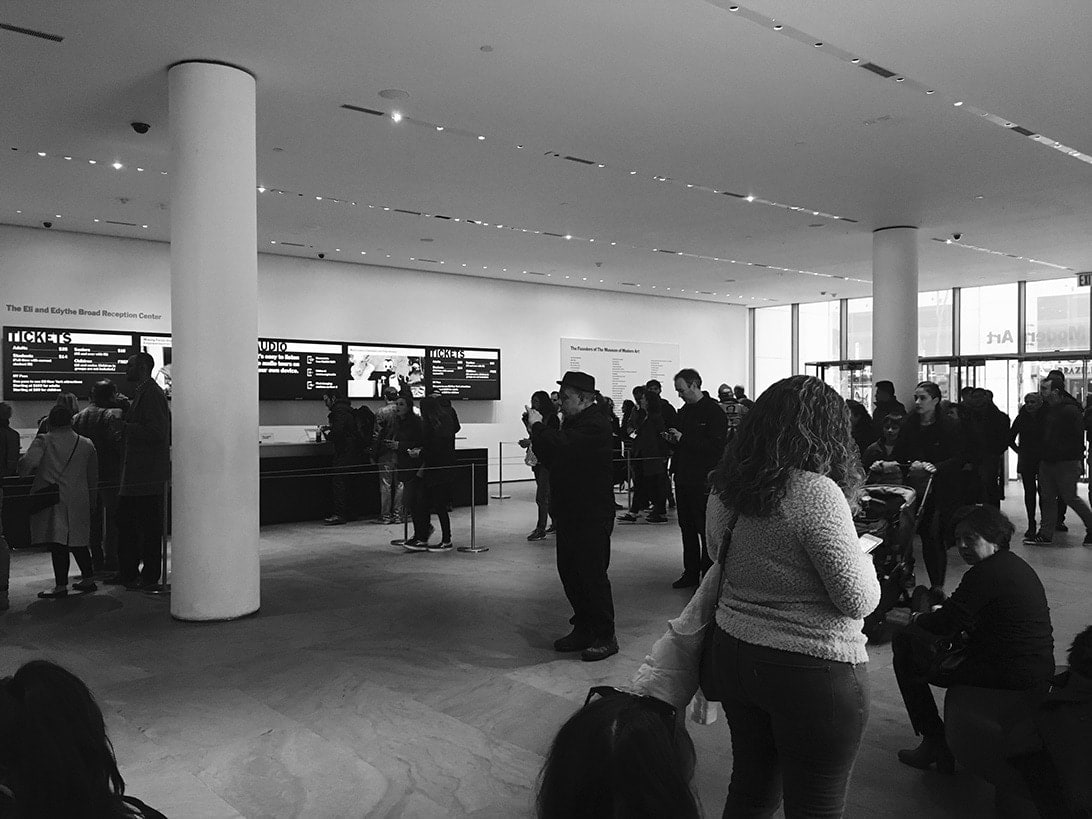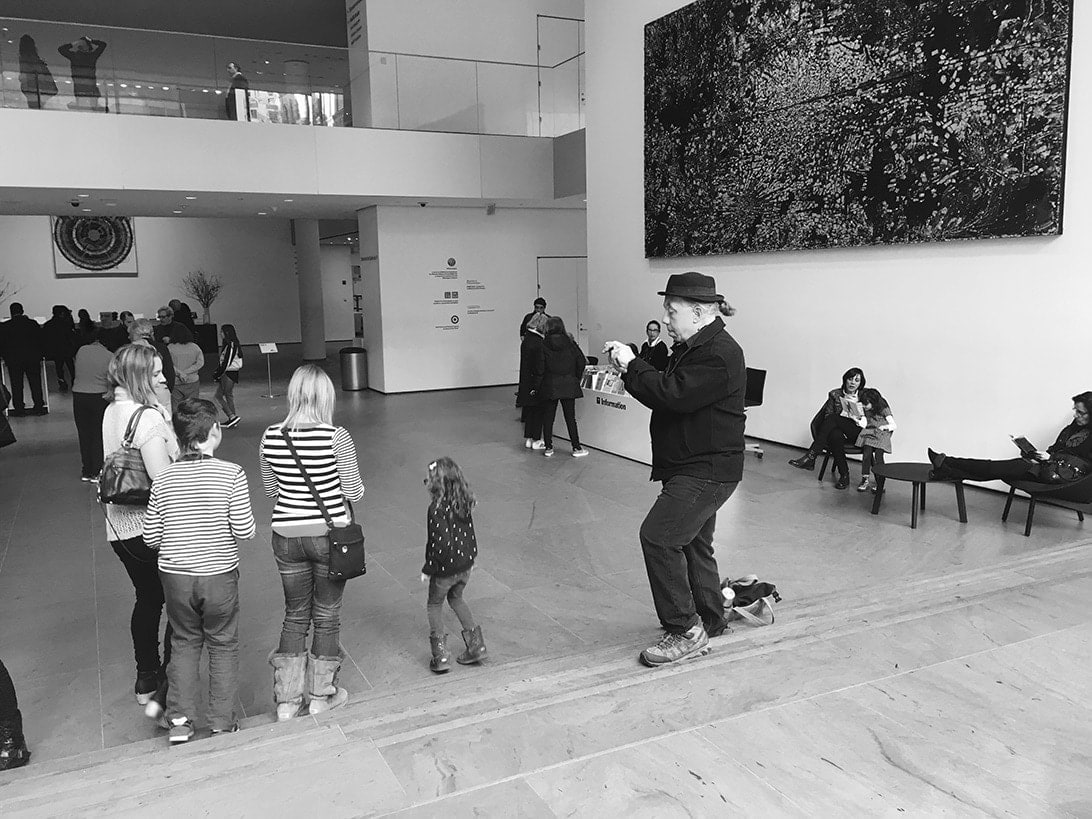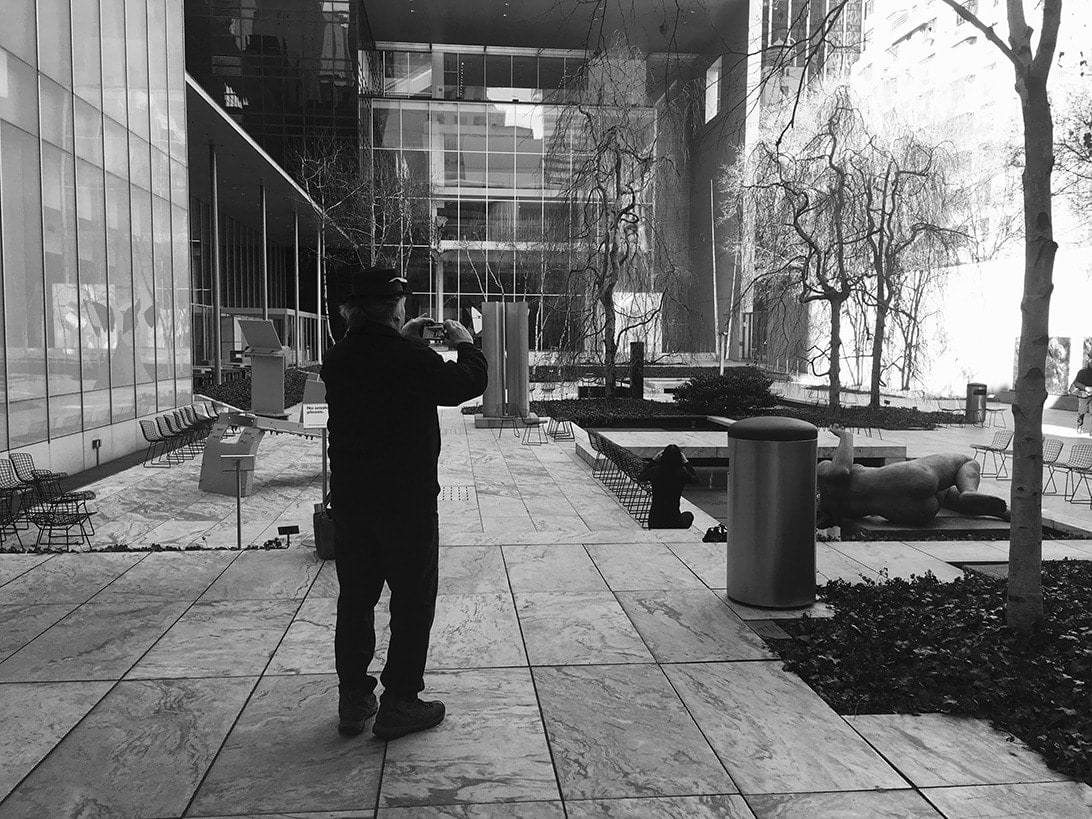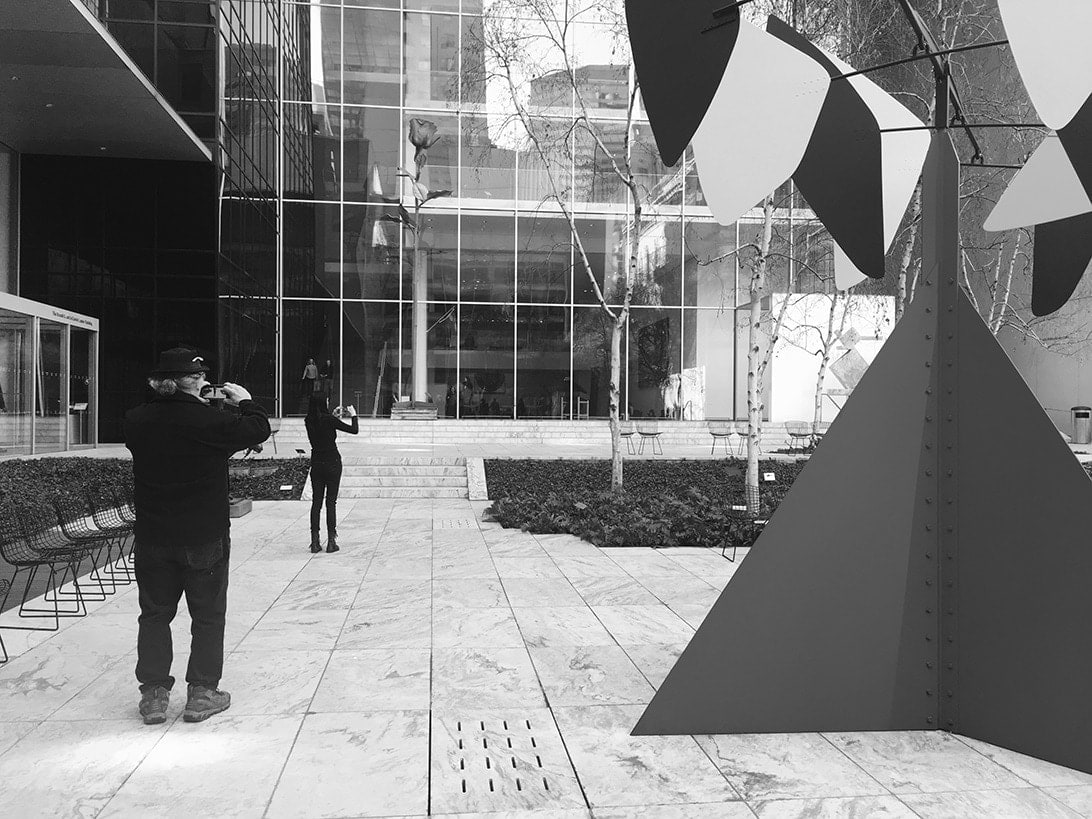Artist Report The Correspondence of Imaginary Places
 10 STEPS TO MOMA is an instructional work resulting in a moving image work that aims to test the notion of ‘publicness’ of a public places and our engagement with the architecture of institutions. MOMA was chosen as the place for filming for a number of reasons; firstly there are current plans for extension and renovation of the MOMA gallery, which claim to enhance the ‘public’ nature of the building; secondly the architects chosen for the renovation include Diller and Scofidio who have had an interesting past practice of using recorded footage to critique and subvert ways that we engage with the built environment; thirdly the choice of MOMA turns the lens on the institution, making it the subject of an art work, rather than the presenter or beholder of one; while finally the project also speaks to the fetishisation of the institution and the strategic steps that artists may make to try to engage or disengage such institutions.
10 STEPS TO MOMA is an instructional work resulting in a moving image work that aims to test the notion of ‘publicness’ of a public places and our engagement with the architecture of institutions. MOMA was chosen as the place for filming for a number of reasons; firstly there are current plans for extension and renovation of the MOMA gallery, which claim to enhance the ‘public’ nature of the building; secondly the architects chosen for the renovation include Diller and Scofidio who have had an interesting past practice of using recorded footage to critique and subvert ways that we engage with the built environment; thirdly the choice of MOMA turns the lens on the institution, making it the subject of an art work, rather than the presenter or beholder of one; while finally the project also speaks to the fetishisation of the institution and the strategic steps that artists may make to try to engage or disengage such institutions.

INSTRUCTIONS FOR 10 STEPS TO MOMA :
Three people dressed in all black to go to MOMA – take camera phones with memory space to film as per the 10 location shots below. If possible please set all devices to highest resolution black and white. Please only do one shot per location, do not repeat even if you feel you would like to do it again.
1st person is to make 10 x 5 sec films of the building as per the 10 locations below. All filming to be done as close up detail, in horizontal 5 second pans with architectural “seam” or meeting point of different materials at the centre of the screen (creating a horizon line). Please always choose the highest points of contrast to film – please stand back far enough to pan so you do not need to move your body for each location.

10 LOCATIONS OF FILMING 1.Signage over the front door – pan right to left. 2.Threshold of entrance doors – pan left to right. 3.Main foyer dark small steps meets the white wall – pan right to left. 4.Main stairs in the atrium – pan left to right. 5.1st floor glass balustrade – pan right to left. 6.2nd floor corridor windows – pan left to right 7.6th floor glass roof - pan right to left. 8.Sculpture Garden long bench seat– pan left to right. 9.Sculpture Garden pond – pan right to left. 10.Sculpture Garden bed – pan left to right.

2nd person is to make 10 x 5 sec films of the 1st person carrying out the 10 location shots above. All filming of the 1st person to be done horizontally, behind them with their body in the centre of the screen as close to same size as possible in each of the 10 shots. Please stand far back enough so we can also see the architecture they are filming, please do not move the camera while filming – hand held is ok.
3rd person is to take 10 photographs – some of the 1st person, some of the 2nd person and some of both together. Please TRY TO get the context of the building and other people in the building in some of the photographs.
1st, 2nd and 3rd person to email (or put in dropbox/ G-drive ) all files to me. I will collate into a split screen film 50 seconds long of footage from 1st and 2nd person side by side.

REPORT BY CAROL WARNER:
The collaboration started in July 2016, via Skype. I felt an immediate connection with Sarah and, have to admit, her progress impressed me. She already knew what her project was about and why she wanted to work with me. I felt we were equally matched in enthusiasm, but had no idea what my project would be.

Interestingly, the U.S. election became a backdrop for both projects. I quickly realized that nostalgia and the American Dream would inform my work. I had no idea how much it would inform how my relationship to Sarah’s performance.

When I received Sarah’s instructions for her performance at MOMA, I had mixed feelings. At first, I felt drawn to her attention to architectural detail and her openness to engage in chance encounters with a “found” audience. On the other hand, I was pretty sure we would get arrested. After all, the instructions required three participants, dressed in black, all in various stages of video/photography; forming a line of documentation in a U.S. political and cultural environment that lends itself to doubt and paranoia.

The reality was healing. Scott, Kate and I (Persons 1, 2 and 3) organized ourselves around the architectural setting. We followed Sarah’s precise direction, which resulted in profound, balletic movements. Soon, I was able to give myself over to the work and our makeshift team, and to the museum audience who served as both found objects and unwitting collaborators in the dance that is Sarah’s work.

